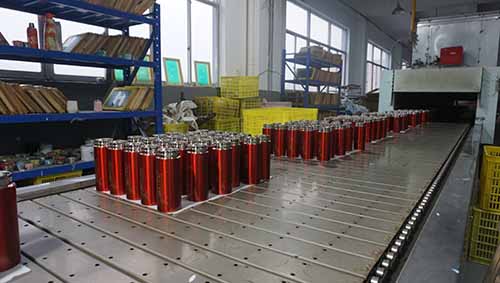Why 316 Stainless Steel Bottle is Expensive than 304 stainless bottles?

If you’ve ever bought a high-end thermos or baby bottle, you’ve probably noticed the proud label on it: Made of 316 Stainless Steel. And you’ve probably noticed it too—it costs more. Whether you’re buying at retail or ordering in bulk, 316 stainless steel bottles always cost more than 304 stainless steel bottles.
What’s so special about 316 stainless steel?
The secret lies in a tiny but powerful ingredient: molybdenum. Adding just 2-3% of this rare metal can increase corrosion resistance by more than 3 times! That’s why 316 stainless steel is the material of choice for “picky” drinkware, such as baby bottles, custom coffee mugs, and high-end thermoses, where quality is of the utmost importance.
What is Molybdenum?
So let’s talk about the real MVP behind 316 stainless steel’s performance—molybdenum (chemical symbol: Mo). It may sound like something out of a chemistry textbook, but this silvery-white metal plays a big role in why 316 water bottles outperform 304 bottles.
- Super strong physical properties
Molybdenum has one of the highest melting points of any metal—a whopping 2,623°C, second only to tungsten. Even at 1,000°C, it retains nearly 90% of its strength, while common metals like iron lose half of their strength. This heat resistance makes it a top choice for aerospace and military applications. When added to stainless steel, molybdenum helps water bottles withstand boiling water, steam sterilization, and the harsh outdoors. - Natural anti-corrosion barrier
Molybdenum also forms a protective oxide layer called molybdenum trioxide (MoO₃). It acts like a natural armor against rust, even in extremely acidic or high-salt environments. In fact, it is 100 times more corrosion-resistant than iron and can even survive aqua regia (a chemical powerful enough to dissolve gold!). Because of this, 316 stainless steel is often used in custom baby bottles, medical thermoses, or any container for sensitive or highly acidic beverages. - Small amounts, big impact
The key is this: Molybdenum makes up just 0.001% of the Earth’s crust. It is found primarily in China, the United States, and Chile, and is a strategically scarce resource. Adding just 2% to 3% of molybdenum to steel can significantly improve the steel’s durability, temperature resistance, and corrosion resistance. That’s why molybdenum is often called the “vitamin of the metal world” – just a small amount can make a big difference.
For manufacturers of mass-produced or custom stainless steel bottles, using 316 stainless steel means fully utilizing the potential of molybdenum to meet high-quality demands. Whether your customers are looking for health and safety, outdoor durability, or daily disinfection, this metal will give you peace of mind with every sip.
Why is 316 more expensive than 304?
One of the main reasons why 316 stainless steel is more expensive than 304 is the addition of molybdenum, a rare and precious element. Molybdenum is more than ten times more expensive than chromium or nickel, and even a small amount can significantly increase the cost of the raw material.
But that’s not all. The production process of 316 is more demanding. It requires tighter temperature control, a finer alloy blend, and more stringent quality assurance—especially important for custom drinkware or medical-grade applications. These extra steps ensure that 316 can perform reliably in environments where 304 might fail.
Rarity plays a role, of course. Molybdenum is a strategic resource, concentrated in a handful of countries, including China, the United States, and Chile. Limited supply and growing demand from aerospace, medical, and food-grade industries drive up its market price.
So while the unit cost may be higher, the value per use—especially in long-term volume orders or high-dependency industries—often outweighs the initial investment. You’re paying for more than just steel; you’re paying for peace of mind, increased safety, and long-term durability.
2% Molybdenum Changes the Stainless Steel Bottle Game
Back in the 1960s, scientists made a surprising discovery: adding 2% to 3% molybdenum to stainless steel could significantly improve its corrosion resistance in harsh environments. 316 stainless steel was born, and it quickly became the gold standard for high-end thermoses, baby bottles, and custom drinkware.
The magic is in the molybdenum content. Studies have shown that when molybdenum levels exceed 2.2%, the metal’s corrosion resistance not only improves, but it increases dramatically. This is exactly what the beverage container industry needs to safely hold acidic juices, salt water, and even herbal tonics.
- Corrosion resistance: Like a shield
Stronger protective film: Molybdenum combines with chromium and oxygen to form a dense protective oxide layer. Although it is only half the thickness of a typical chromium oxide layer, it is 40% harder. In acidic solutions (pH about 3), 316 stainless steel has a 66% lower corrosion rate than 304 stainless steel, helping to prevent harmful metal ions from penetrating into beverages.
Prevent pitting and crevice corrosion: Chloride ions (such as those in sweat, tap water or sports drinks) corrode ordinary stainless steel, forming tiny corrosion holes, known as “pitting”. But the molybdenum in 316 stainless steel releases electrons to prevent this process. Its pitting resistance temperature is 20°C higher than that of 304 stainless steel, which means it can safely hold salt water, carbonated beverages or electrolyte solutions without damage.
- High temperature resistance, worry-free
High temperature oxidation control: During high temperature steam sterilization (about 120°C), the molybdenum element can slow oxidation and prevent the surface from losing its gloss. Tests show that 316 stainless steel gains 50% less weight due to oxidation than 304 stainless steel, and remains shiny and rust-free even after repeated sterilization.
Improved manufacturing performance: Molybdenum can also strengthen metal structures. In mass production, 316 stainless steel is less prone to cracking during stretching and pressing, reducing defect rates by up to 40%. This ensures uniform wall thickness – which is especially important for double-wall vacuum bottles to maintain reliable insulation performance.
- All-round compatibility and long-lasting durability
Acid and alkali resistance: Whether it is espresso or traditional Chinese medicine pieces, 316 stainless steel can easily handle acidic and alkaline liquids. Therefore, it has become the material of choice for customized cups to meet various beverage cultures and needs.
Self-repairing surface: Accidentally scratched or bumped the bottle? Don’t worry. Molybdenum can react with air and water to quickly rebuild the protective layer, and its self-repair speed is three times faster than steel without molybdenum. This means longer product life and fewer returns or complaints in the supply chain.
Here’s the chemistry behind its durability:
Nickel keeps the steel structure stable,
Chromium builds an essential protective layer, and
Molybdenum fills in the gaps—especially in weak spots like welds and corners.
The synergistic effect of this “three-in-one” alloy gives 316 alloy its edge. With a high molybdenum content of 2% to 3%, manufacturers achieve the perfect balance of performance and cost, making it the material of choice for high-end cups, either in bulk or custom-made.
At Jariino, we’ve mastered the craft of custom stainless steel bottles over the years. We understand how to maximize the potential of 316 stainless steel, from selecting the right material to precision forming and vacuum sealing. Choosing Jariino is more than just buying a bottle; it’s an investment in market confidence, long-term performance, and customer trust. In a world filled with choices, a carefully crafted, molybdenum-rich 316 stainless steel bottle is more than just a product. It’s a trusted, profitable, and popular item on your shelf that your customers will come back for again and again.



